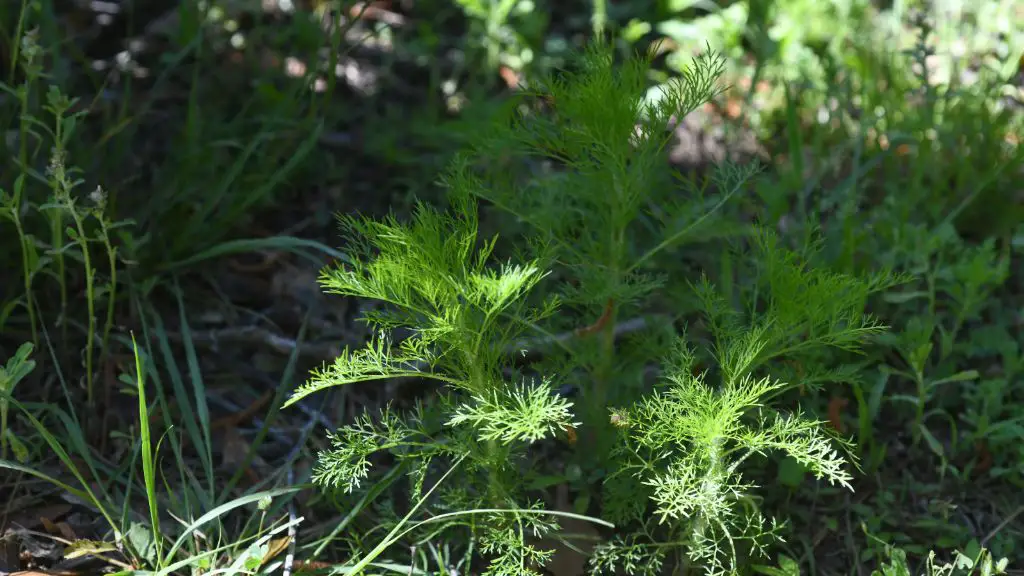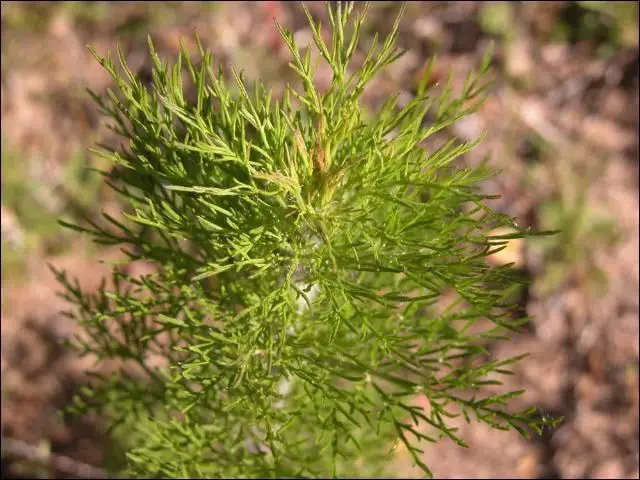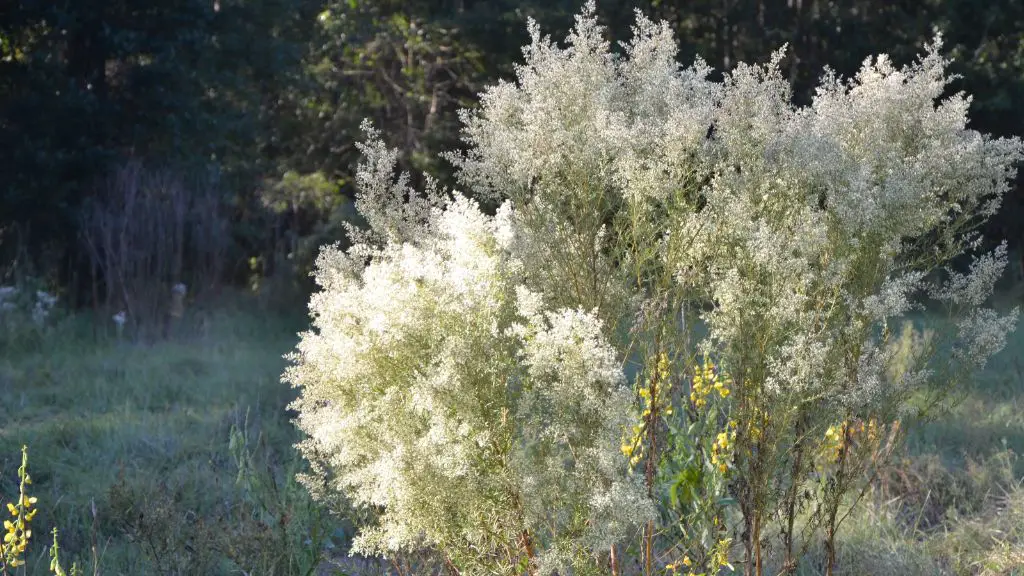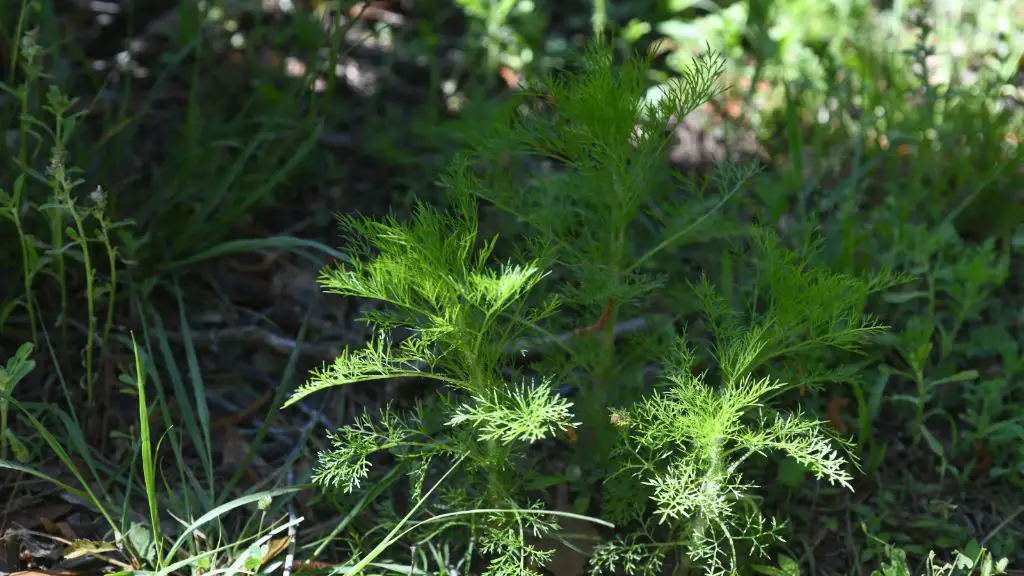What is Dog Fennel?

Dog fennel (scientific name Eupatorium capillifolium) is a herbaceous flowering plant native to North America. It is considered a weed in many areas due to its ability to easily spread and choke out desirable plants. Dog fennel gets its common name from its fern-like foliage, which resembles the leaves of a fern plant. The leaves are elongated and feathery in appearance. The foliage emerges early in the spring and persists until the first frost. In summer and fall, dog fennel produces clusters of small white flowers at the ends of its stems. These flowers give way to brown, compressed fruits that contain seeds with tufted bristles that disperse in the wind like dandelion seeds.
Why Kill Dog Fennel?
Dog fennel (Eupatorium capillifolium) is considered an invasive weed in many areas. It spreads aggressively and can quickly take over landscapes, crowding out desired plants.
As an invasive species, dog fennel grows rapidly and produces an abundance of seeds, allowing it to spread unchecked. Just a few plants can multiply into dense thickets, covering large areas in a short amount of time.
Left uncontrolled, dog fennel crowds out native plants and disrupts local ecosystems. It can take over fields, fence rows, roadsides, forests, and disturbed areas. Dog fennel thickets alter light availability, nutrient cycling, moisture levels, and other environmental conditions.
For gardeners and landowners, dog fennel is very difficult to control once established. It’s considered a nuisance weed due its ability to reduce biodiversity and degrade habitats. Killing dog fennel helps prevent its aggressive spread and protects desirable vegetation.
Manual Removal
The most basic way to remove dog fennel is to physically pull or dig up the plants. This involves grasping the plant at ground level and pulling straight up to remove the entire root system. Removing just the top growth will cause the plant to quickly regrow from the remaining roots.
Manual removal can be effective for small infestations, but it is very labor intensive. The extensive root system of dog fennel makes it challenging to fully remove each plant. Any roots left behind will allow the weed to resprout. Repeated digging and pulling over time may be necessary to exhaust the energy stored in roots and destroy the plant.
The ideal time for manual removal is when the soil is moist, which makes uprooting easier. Remove plants before they produce seeds to prevent spreading. Place any pulled plants into plastic bags to dispose of safely and prevent re-rooting.
While highly effective when done thoroughly, manual weeding requires diligence and persistence. It works best for small areas and may not be practical for large infestations of dog fennel. Herbicides or other removal methods may be more efficient in those cases.
Mowing

One method to control dog fennel is to mow it frequently. Frequent mowing can help deplete the plant’s root reserves over time, gradually weakening it. For this method to be effective, the area must be mowed often enough that the dog fennel cannot fully recover and rebuild energy between mowings.
Mowing is more useful for controlling young or immature dog fennel plants. Mature plants with larger root systems are much harder to control through mowing alone, as they can quickly recover and regrow after being cut down. For large, established dog fennel, mowing may slow the plant’s spread, but it likely won’t fully eradicate it. Herbicides or other control methods would be needed in addition to mowing for better control of mature stands of this invasive weed.
Burning
Burning can effectively damage the above-ground growth of dog fennel plants. The high heat from fire can scorch and kill existing foliage and stems. However, burning alone may not completely eradicate dog fennel infestations. The plants’ underground root structures can survive fires and resprout new growth. Repeated burns may be needed over time to exhaust the root reserves and fully eliminate the population. If utilizing burning, proper precautions must be taken to contain the fire and prevent uncontrolled spread to other areas. The risk of an accidental wildfire starting must be appropriately managed. Overall, burning can provide partial control of dog fennel but careful planning is required for best results and safety.
Herbicides
Of the chemical treatment options, herbicides tend to provide the most effective dog fennel control when applied correctly. The most commonly used and effective herbicides for dog fennel are glyphosate and triclopyr products.

Glyphosate is a non-selective herbicide that will kill most plants it comes into contact with. When applied directly to dog fennel, it is readily absorbed by the leaves and translocated to the roots, providing complete control. Glyphosate products such as Roundup are most effective when applied to actively growing plants once they reach the bud to flowering stage. This is usually in late summer or fall. Two applications may be required for complete eradication.
Triclopyr is a selective herbicide that targets broadleaf weeds like dog fennel while causing little or no damage to grasses. Products containing triclopyr like Brush-B-Gon are most effective on younger dog fennel plants under 2 feet tall. For larger plants, triclopyr should be combined with glyphosate for optimum effectiveness.
When using any herbicide for dog fennel control, it is critical to read and follow label directions for proper mixing, application rates, and safety precautions. Applying too much can damage non-target plants, while too little may result in poor control. Herbicides should only be applied at the right stage of growth for maximum effectiveness.
Biological Control
There are currently no approved biocontrol agents for dog fennel. Research is being conducted into developing a fungal-based biological control. The fungus Puccinia xanthii has shown promise in lab trials as a dog fennel pathogen, but it has yet to be approved for field release. More research is still needed to fully evaluate its host specificity and effectiveness before it could be registered as a biocontrol agent.
Utilizing naturally occurring fungal pathogens to target dog fennel provides a biological control option that is host-specific and less environmentally disruptive than chemical herbicides. But ensuring the safety and efficacy of potential biocontrol agents involves extensive testing and review before they can be registered for commercial use. While biological controls like P. xanthii may someday provide another tool for integrated dog fennel management, more research and development is still required.
Cultural Control
Cultural control methods seek to discourage dog fennel growth by promoting competition from desirable plants and reducing opportunities for the weed to establish itself.
Applying mulch in areas prone to dog fennel can help suppress its germination and growth. Organic mulches like wood chips or pine straw work well. Make sure to apply mulch 2-4 inches deep for best results.
Avoiding soil disturbance is also key. Dog fennel thrives in areas of bare or disturbed soil. Limit digging, tilling, and earthmoving to reduce openings for dog fennel to take root.
Finally, establish and promote the growth of desirable grasses and native plants. The thicker and more vigorous the existing vegetation, the harder it will be for dog fennel to invade.
Integrated Management

To successfully control dog fennel, an integrated management approach that combines multiple techniques is often the most effective strategy. Trying just one single method may not provide adequate long-term control.
When designing an integrated program, it’s best to prioritize the options likely to have the greatest impact first, such as herbicide applications, before moving to supplementary techniques like mowing or burning. The goal is to weaken and kill existing dog fennel while limiting future growth and seed production.
Regardless of methods used, monitor treated areas closely and repeatedly for any regrowth. Dog fennel can be prolific, so diligent follow-up is imperative. New sprouts and seeds may require additional management efforts. Persistence and consistency will provide the best chance for longer term dog fennel suppression.
Prevention
The best way to prevent dog fennel infestations is to remove plants before they go to seed. Dog fennel produces many small seeds that readily spread, so removing plants before they set seed will help stop the spread. Be sure to bag and dispose of any plants that have already gone to seed, so the seeds don’t fall to the ground and sprout new plants.
It’s also important to thoroughly clean any equipment used in infested areas before moving it to uninfested sites. Seeds can easily get caught in tire treads, mower decks, or other equipment and spread dog fennel to new areas. Carefully remove any visible seeds and wash equipment after use.
Planting competitive groundcovers can also help prevent dog fennel invasion. Dense turfgrass, native grasses, or spreading groundcovers like mondo grass leaves little room for dog fennel seedlings to establish. Maintaining healthy, dense vegetation will help repel this invasive weed.